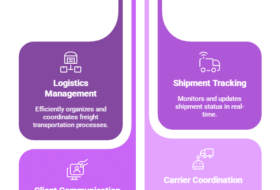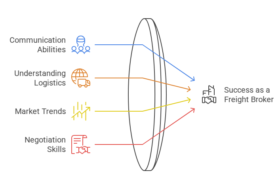Route planning and time management are crucial aspects of running a successful box truck business. Efficient route planning not only saves time and reduces fuel costs but also enhances customer satisfaction by ensuring timely deliveries. In this article, we will explore the importance of route planning and time management for box trucks and provide practical tips to optimize these processes.
The Importance of Route Planning and Time Management
Cost Savings: Well-planned routes reduce mileage and fuel consumption, leading to significant cost savings for the box truck business.
Time Efficiency: Optimized routes minimize travel time, allowing drivers to complete more deliveries in a day, increasing productivity and revenue.
Customer Satisfaction: On-time deliveries are crucial for maintaining positive relationships with customers. Efficient route planning helps ensure that deliveries arrive promptly, enhancing customer satisfaction.
Reduced Emissions: By reducing unnecessary travel and idle time, efficient route planning contributes to environmental sustainability by lowering greenhouse gas emissions.
Driver Satisfaction: Well-organized routes reduce stress for drivers, leading to improved job satisfaction and better performance.
Tips for Effective Route Planning and Time Management
Utilize Route Optimization Software: Invest in route optimization software that considers multiple variables, such as traffic conditions, delivery windows, and truck size restrictions, to generate the most efficient routes.
Consider Real-Time Updates: Use GPS tracking and real-time traffic data to make adjustments to routes on the fly, avoiding unexpected delays and road closures.
Group Deliveries by Location: Cluster deliveries in the same geographic area to reduce travel time between stops and minimize backtracking.
Plan for Rush Hour and Peak Traffic: Schedule deliveries outside of peak traffic hours whenever possible to avoid congestion and delays.
Factor in Loading and Unloading Time: Account for loading and unloading times at each stop when planning the overall route and schedule.
Prioritize Deliveries: Arrange deliveries based on priority or time-sensitive requirements to ensure that critical shipments are handled promptly.
Communicate with Drivers: Provide clear instructions to drivers regarding the planned routes and any updates or changes. Effective communication can help them navigate efficiently.
Avoid Left Turns: In areas with heavy traffic, avoiding left turns can save time and reduce the risk of accidents. Optimize routes to favor right turns instead.
Prevent Overloading: Avoid overloading box trucks, as it can lead to fines, delays, and increased fuel consumption.
Plan for Breaks: Incorporate scheduled breaks for drivers to avoid fatigue and ensure compliance with hours-of-service regulations.
Perform Regular Route Audits: Routinely review and analyze route performance to identify areas for improvement and efficiency.
Collaborate with Clients: Work closely with customers to align delivery schedules, understand their needs, and streamline the logistics process.
Conclusion
Effective route planning and time management are integral to the success of any box truck business. By implementing the tips mentioned above and utilizing route optimization tools, businesses can optimize delivery schedules, reduce operational costs, and enhance customer satisfaction. Moreover, prioritizing driver well-being and fostering open communication with clients contribute to creating a well-organized and efficient logistics operation. With continuous improvements and adaptation to changing circumstances, businesses can ensure the smooth and timely transportation of goods, thereby driving the success and growth of their box truck enterprise.








